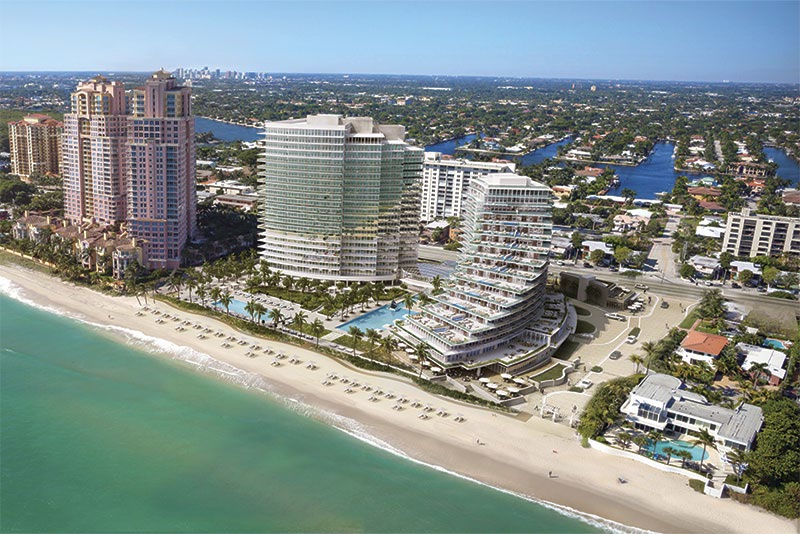
Miami-based Related Group is a big believer in downtown Fort Lauderdale. Led by billionaire developer Jorge Peréz, Related is building the 36-story, 349-unit third phase of New River Yacht Club, a luxury rental apartment development near the Florida East Coast railroad just south of the river. At the same time, Related is planning a new high-rise condo on Las Olas Boulevard, across the street from the company’s 45-story Icon Las Olas apartment tower, one of the tallest buildings in town, with tall rents to match.
“We’re very bullish on Fort Lauderdale,” says Jon Paul Peréz, president of Related Group and a son of Jorge Peréz. “We’ve seen very strong demand, not only for our product but all the new apartments that have been built and have been absorbed fairly quickly, at very healthy rents.”
Rising interest rates could slow the pace of residential development in downtown Fort Lauderdale. The Federal Reserve started raising interest rates in early 2022 to reduce inflation and continued to bump up the cost of borrowing in early 2023.
“It could potentially slow down new development for the short term,” Peréz says. “The interest rates are higher, so the cost is more.”
But so far, costlier credit has done little to slow the flow of new residential developments in the downtown area, including the Flagler Village area just north of the central business district.
Last year, the city’s Development Review Committee reviewed 20 developments that would put almost 8,000 new apartments and townhouses in the downtown area. DRC reviewed plans for more downtown residential developments in the second half of the year (12 with a total of 4,568 residential units) than in the first half (eight with 3,320 units). Those developments will add more people to a downtown that’s now home to 25,000 – a remarkable evolution for a city with a core downtown area that had a residential population of essentially zero a quarter century ago. And yet even with all that development, Fort Lauderdale has some of the nation’s steepest rent growth and a below-average rate of home ownership.
More New Units, But Even More New Residents
High-net-worth individuals relocating to Florida’s friendly-to-the-wealthy taxes, as well as top executives who could work and live anywhere, are key components of the modern market for downtown housing in Fort Lauderdale. Les Waites, a residential real estate broker with Keyes Realty, is a Coral Ridge homeowner who has lived and worked on the city’s east side for the last 20 years.
“The other thing we see in downtown Fort Lauderdale is the migration from Miami-Dade County to Broward County,” Waites says, citing a wide difference in pricing.
“Prices in downtown Fort Lauderdale for condominiums are anywhere between $500 and $800 to $900 per square foot, depending on the building. That’s half of what you’d expect to pay to live in Miami.” Prices are considerably higher, of course, for newer condos near the ocean or the Intracoastal Waterway. For example, condo prices at Related Group’s Auberge Beach Residences generally range between $1,200 and $1,400 per square foot, he says.
However, rental apartment development has far outpaced condo development in downtown Fort Lauderdale. One reason may be the lofty rents that five-star urban apartments command. “The rental rates are quite healthy these days,” Waites says. “The luxury apartment rental rates are the same payment as a mortgage – $6,500 a month, if not more, in some cases.”
Indeed, Broward County rents soared 30 percent in the 12 months from mid-2021 to mid-2022, “the fastest pace of rent growth nationwide,” according to a research report by national brokerage firm Marcus & Millichap, which credited a local apartment vacancy rate near a mere 2 percent.
The brokerage also reported that since the U.S. outbreak of the COVID-19 pandemic in 2020, Fort Lauderdale has gained 24,000 new households, including many that are priced out of home ownership. “Land constraints limit single-family development levels in the [South Florida] region, which creates a high barrier to entry for home buyers,” Marcus & Millichap noted. “This is reflected in the metro’s homeownership rate, which is nearly 10 percent below the national average.”
Monthly rent for a three-bedroom apartment in Broward reached an average of $3,000 last year, according to a research report by Fort Lauderdale-based Matthews Real Estate Investment Services. Some downtown residents pay much more. At Icon Las Olas, for example, the going rate for a three-bedroom tops $7,000 a month.
“The rates are finally beginning to stabilize and plateau,” Matthews Real Estate reported, “but there have been very few signs that the rates will fall back down to pre-pandemic levels.”
An Ever-Changing Skyline
The largest downtown-area developments Fort Lauderdale’s Development Review Committee has examined since the spring of 2022 include Ombelle, a two-tower, 1,100-unit residential development that Dependable Equities, LLC, is planning at 300 NE Third Ave. in Flagler Village, and nearby, a development at 201 N. Federal Hwy. by New York City-based Parkview International, with 824 residential units.
The city committee also took a hard look at the site plan for Nautica Residences and Hotel, a mixed-use development with 695 residential units plus a hotel, marina, restaurant, café and commercial space. The location at 400 SW Third Ave. is across the New River from the west side of the central business district.
Finding available property to develop in the dense urban core of downtown Fort Lauderdale is difficult, so real estate companies often shop for development sites on the northern and southern fringes of downtown. For example, Related owns land south of the New River in the Rio Vista neighborhood, where the company plans to develop a condominium with about 300 units.
Jon Paul Peréz and other real estate pros expect the pandemic-accelerated migration of companies from higher-tax states to South Florida to persist and to pull more people into Fort Lauderdale’s downtown population.
“In South Florida, basically you’re seeing companies moving to Miami, Fort Lauderdale and West Palm Beach. Those are the three main hubs where relocations and second offices are going to,” Peréz says. “As long as that continues and there is no slowdown of that, we believe that the population growth will continue to be strong in those three cities.”
That migration has helped to increase the population of downtown Fort Lauderdale residents, which has grown to about 25,000 from next-to-nothing since the start of the 21st century, according to the city’s Downtown Development Authority.
“The majority of our residential development downtown has really been just within the last five to seven years. Virtually no residential development existed [downtown] a little over two decades ago,” says Jenni Morejon, president and chief executive officer of the DDA. “It has been quite a story of a city coming into its own.”
Her day-to-day experience working in downtown Fort Lauderdale illustrates the trend. In 2021, the Downtown Development Authority moved its office from the old BB&T Building at 110 E. Broward Blvd. to the new Main Las Olas commercial complex at 201 E. Las Olas Blvd. Many of the offices were vacant in 2021 and the pandemic was undermining efforts by the locally based developer, Stiles, to lease them. But now, as the pandemic recedes, Main Las Olas is abuzz with activity.
“When we moved in, it was pretty empty. We were parking on the second and third levels of the parking garage, which has eight levels,” Morejon says. “Now, if you come in after 9 o’clock, you’re up at level seven almost every day. The lobby is always filled. The elevators are full. It is fully leased.”
Downtown attractions and public spaces are part of Fort Lauderdale’s urban appeal, and more are coming. They include a tunnel-top plaza on the downtown side of the Henry E. Kinney Tunnel beneath the river and an upgraded Huizenga Park next to the Andrews Avenue bridge.
“Fortunately, we’re seeing both of those projects come to life now,” Morejon says. The tunnel-top plaza will extend 117 feet above the Kinney Tunnel. “It will create new public space,” she says. “It also will improve that whole intersection at Las Olas and Federal Highway, as well as all the way down to the river.”
Huizenga Park previously served as a venue for weekend festivals, starting in the 1990s. “That worked well for a couple of decades,” Morejon says. “But with so much residential growth and so many new employees coming to downtown, we knew we had to transform that park into a space that everyone can use, every day of the week, not just for big festivals.”
The tax-supported Downtown Development Authority had the foresight to buy the two-acre Huizenga Park property as part of a larger, 12-acre purchase of downtown properties decades ago.
“In the 1970s, the DDA purchased about a dozen acres of underutilized, blighted land,” Morejon says. “Everyone was moving to the suburbs, and we decided that we needed to hold onto some of this land for revitalization.”
Another emerging attraction in the downtown area is the redevelopment of War Memorial Auditorium as a training facility for the Florida Panthers, complete with free stadium seating for as many as 1,000 fans during practices and training camps.
Asked if the Panthers team might move their home games to a downtown arena, Morejon recited a bit of team history. “It was really Wayne Huizenga’s dream originally, when he started the team, to purchase enough land downtown by the river for an arena here,” she said. “That clearly didn’t pan out. But there definitely are visionaries, present day, who have said maybe someday, in the future, that could still happen.”
Downtown Fort Lauderdale has become more of a place to live, not just work, since the start of the century, particularly since the end of the Great Recession from 2007 to 2009. The number of rental apartments in downtown Fort Lauderdale nearly matches the number in downtown Miami, Morejon

City of Change
A time traveler from 1999 would not recognize today’s Fort Lauderdale. But will a rising skyline ever lead to falling rents and home prices?
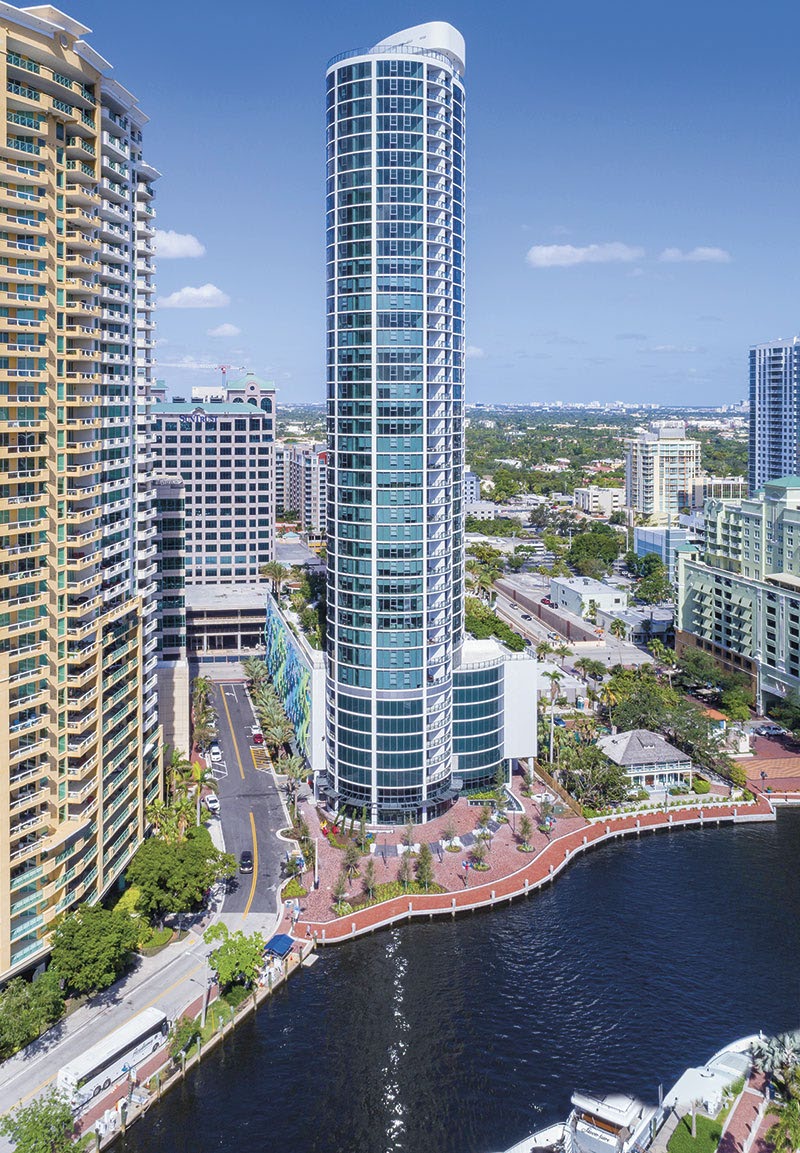
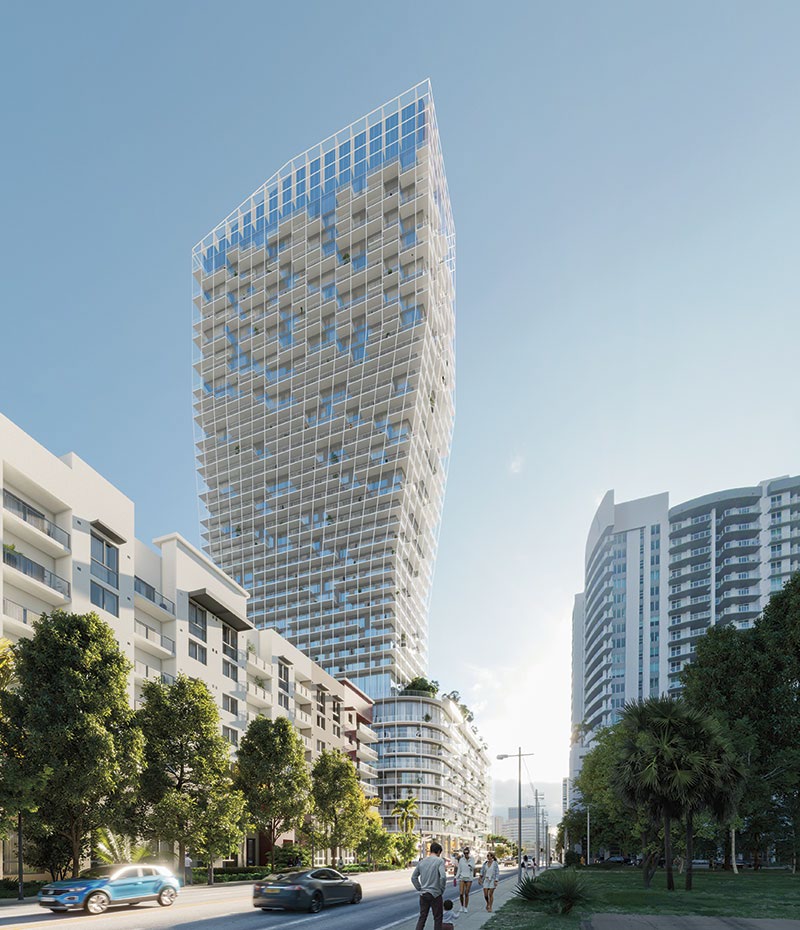
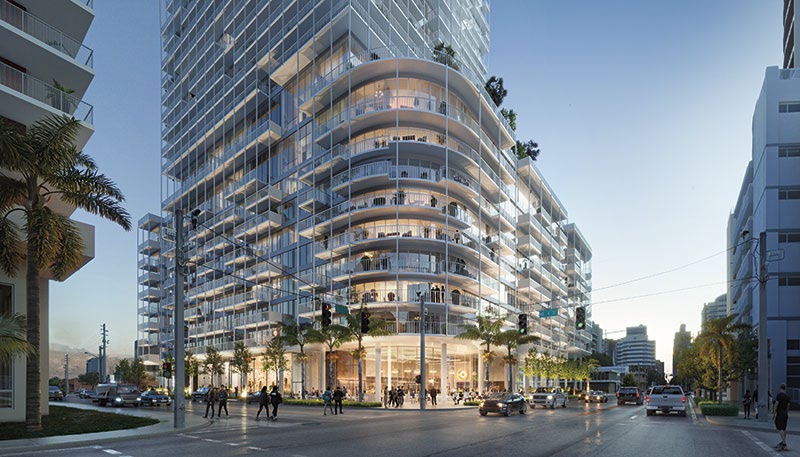
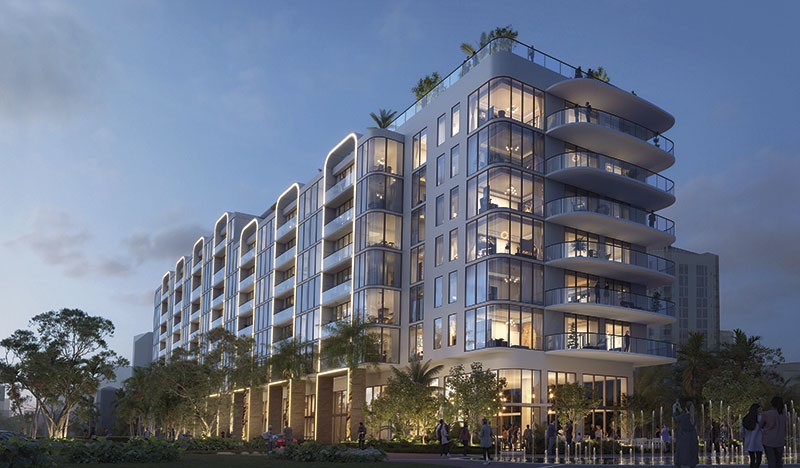


City of Change
A time traveler from 1999 would not recognize today’s Fort Lauderdale. But will a rising skyline ever lead to falling rents and home prices?

Huizenga Park previously served as a venue for weekend festivals, starting in the 1990s. “That worked well for a couple of decades,” Morejon says. “But with so much residential growth and so many new employees coming to downtown, we knew we had to transform that park into a space that everyone can use, every day of the week, not just for big festivals.”
The tax-supported Downtown Development Authority had the foresight to buy the two-acre Huizenga Park property as part of a larger, 12-acre purchase of downtown properties decades ago.
“In the 1970s, the DDA purchased about a dozen acres of underutilized, blighted land,” Morejon says. “Everyone was moving to the suburbs, and we decided that we needed to hold onto some of this land for revitalization.”
Another emerging attraction in the downtown area is the redevelopment of War Memorial Auditorium as a training facility for the Florida Panthers, complete with free stadium seating for as many as 1,000 fans during practices and training camps.
Asked if the Panthers team might move their home games to a downtown arena, Morejon recited a bit of team history. “It was really Wayne Huizenga’s dream originally, when he started the team, to purchase enough land downtown by the river for an arena here,” she said. “That clearly didn’t pan out. But there definitely are visionaries, present day, who have said maybe someday, in the future, that could still happen.”
Downtown Fort Lauderdale has become more of a place to live, not just work, since the start of the century, particularly since the end of the Great Recession from 2007 to 2009. The number of rental apartments in downtown Fort Lauderdale nearly matches the number in downtown Miami, Morejon


